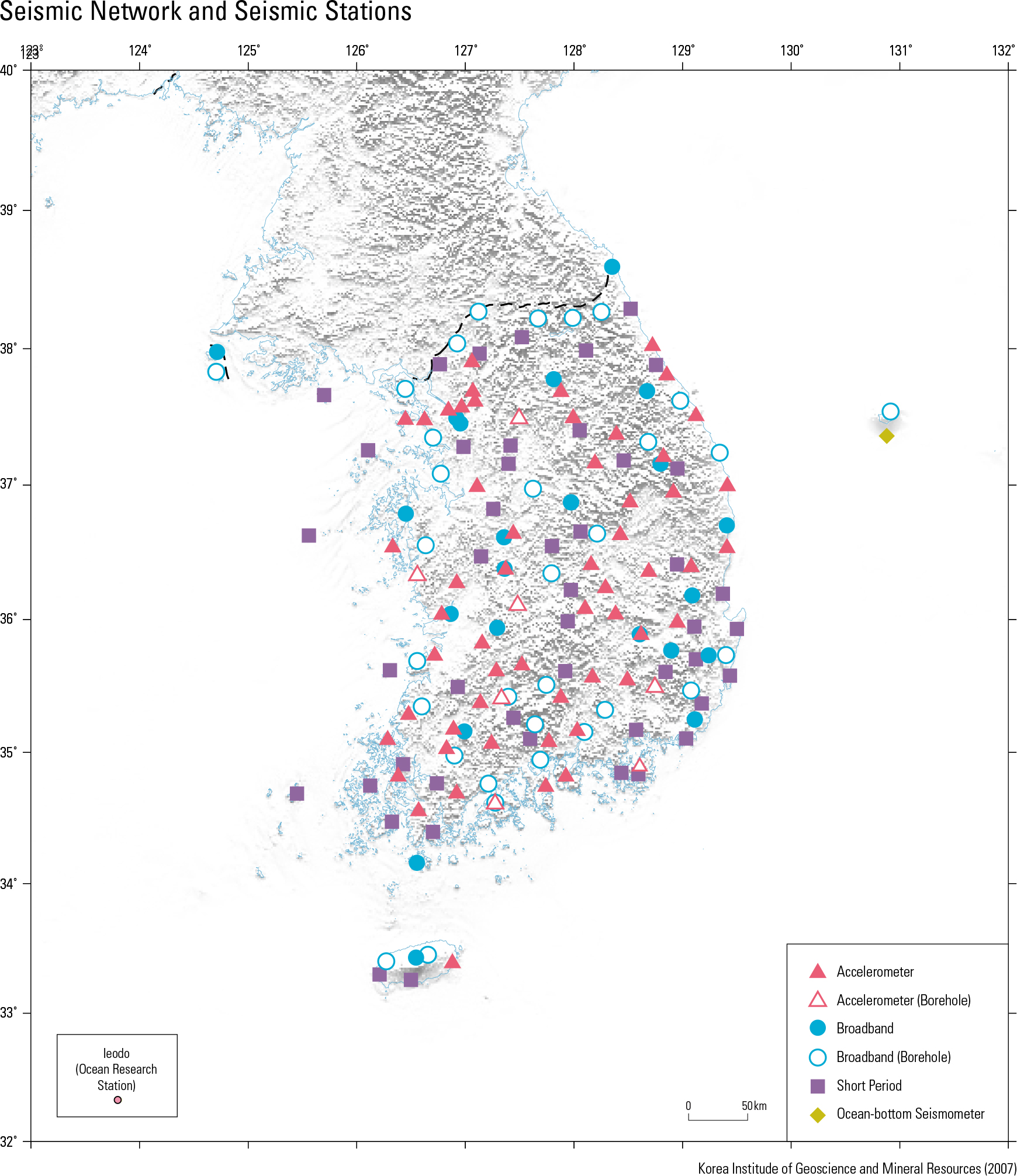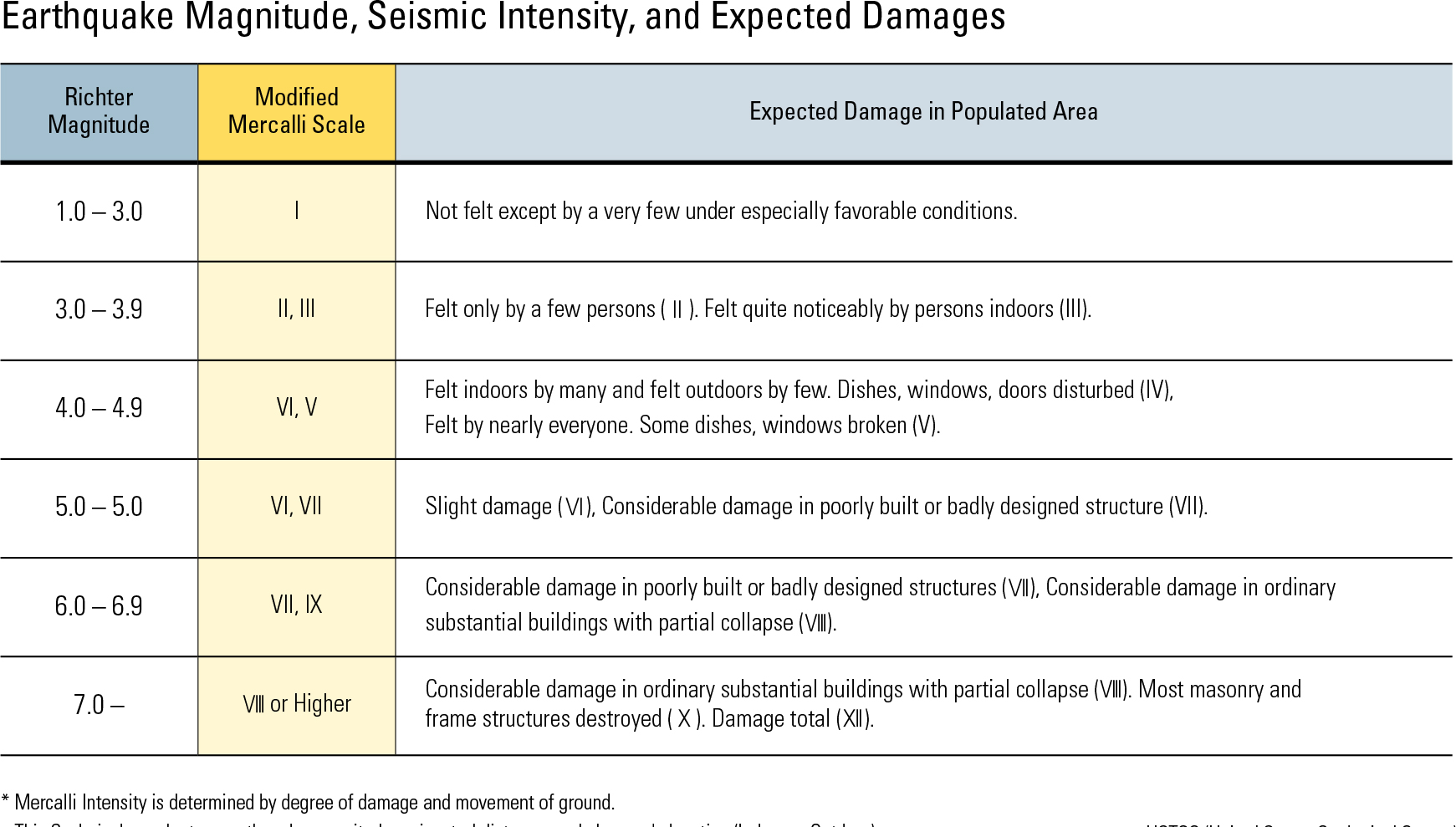English II
The Korean Peninsula located on the Eurasian plate had long been recognized as a relatively safe region from strong earthquakes compared to other countries such as Nepal and Japan, which are located along plate boundaries. However, ever since the Korea Meteorological Agency (KMA) began to officially record seismic activity in 1978, there has been fairly strong seismic activity within the Korean Peninsula including the earth- quakes at Hongseong-gun (a magnitude of 5.0) in 1978, Yeongwol-gun (a magnitude of 4.5) in 1996, and Odaesan (a magnitude of 4.8) in 2007, Gyeongju (a magnitude of 5.8) in 2016. Further investigation using Korean historical records points out that there were even larger magnitude earthquakes in the past. Thus, this evidence leads to the conclusion that the Korean Peninsula is not a seismically-safe region. Based on estimates from historical records, the epicenters of historical earthquakes with seismic intensity greater than V (in the Midi ed Mercalli Scale) are mostly located in the areas to the south of Chungcheong-do and in the western Pyeon- gan-do. The epicenters estimated from historical observations are similar to the epicenters estimat- ed by modern seismic observations, indicating that these historical seismic events can reliably reveal the characteristics of seismic activity on the Korean Peninsula. The most interesting nd- ings in the historical records are the reports on strong earthquakes which resulted in casualties, damage to castles and ground ruptures, leading to tsunamis. For example, during the 21th year of the reign of King Injo (1643 AD), there were re- ports of a strong earthquake that collapsed casthle walls in the Ulsan area and caused a tsunami. Such historical information warns of the necessity in increased preparation for future earthquakes and tsunamis in the Korean Peninsula. The observation of seismic activity officially began after the installation of a mechanical seis- mograph at Incheon in 1905; later, seismographs were installed in five more stations in Busan, Gyeongsung, Daegu, Pyongyang, and Chupun- gryong. In 1937, quantitative seismic observa- tions of seismic activity on the Korean Peninsula began at these six stations. In March of 1963, the United Stated Geological Survey (USGS) in- stalled an international standard seismograph in Seoul as a member of the World Wide Standard Seismograph Network (WWSSN). In 1978, KMA installed two seismic stations. Today, two major seismic agencies, the KMA and KIGAM (Korean Institute of Geology and Mining) are operating 180 seismic stations to monitor seismic activity on the Korean Peninsula. After the introduction of instrumental seismic observation in 1978, the strongest recorded earth- quake (magnitude of 5.8) occurred in an area lo- cated 8 km south-south-westward away from the Gyeongju on September in 2016. Unof cially, the second strongest earthquake occurred in the Eui- ju-Sakju-Guisung region with a magnitude of 5.3. The following notable earthquakes occurred with a magnitude of 5.2 in Uljin-gun, Gyeongsang- buk-do on May 2004 and in Sokrisan on Septem- ber in 1978. While it may be premature to pre- scribe patterns, the instrumental earthquakes data thus far indicate that most major earthquakes tend to occur in near-coastal regions, western Gyeong- gi-do and in the regions to the south of Chungc- heong-do. This result is similar to the distribution pattern of historical earthquakes with seismic intensity greater than V. Since the instrumental seismic observation from 1978, the frequency of seismic activity has increased, but if those events with a magnitude greater than 3 are considered, frequency has remained the same as in the past. However, the number of instrumental earthquakes with a magnitude greater than 3 in Gyeongju in- creased greatly after the 2016 earthquake with a magnitude of 5.8. Based on both the instrumental and historical data, the probable maximum mag- nitude of an earthquake on the Korean Peninsula is estimated to lie between 6.97 and 7.5, with a recurrence period of a few hundred years.
page_2 |




